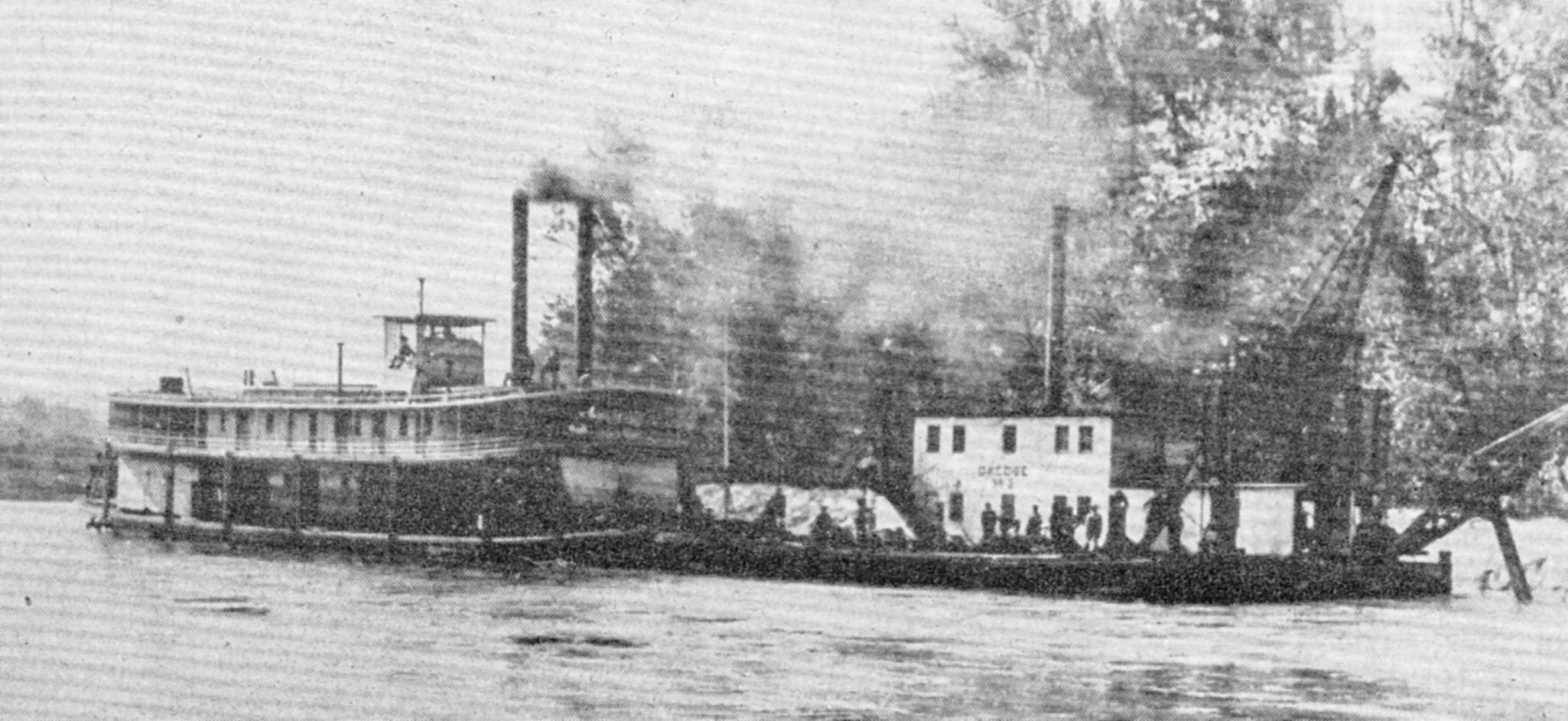Originally named Annie M, this sternwheel towboat was built in 1888 at Gadsden, Ala., by A.J. Sweeney & Son. Constructed on a wooden hull that measured 122 feet in length by 20 feet in width, the vessel operated on the Coosa River for the Coosa Iron Company, which towed logs to its furnace and burned them for charcoal.
The U.S. Army Corps of Engineers purchased the steamboat in 1892, rebuilt it at the site of Lock No. 4 and renamed it Leota. The rejuvenated riverboat had larger measurements of 137 feet by 28 feet, with a hull depth of nearly 4.5 feet. Tonnage was listed as 167. The engines had 10-inch cylinders with a 4-foot stroke. Two Western Rivers-type, return-flue tubular boilers, 22 feet long, supplied the steam. The paddlewheel was 14 feet in diameter and had 13 bucket planks that were 13 feet long by 16 inches wide.
The Leota continued operating on the Coosa River for many years, towing sand, gravel, cement and other material used in the construction of Lock No. 4. It was also active in other government work, including towing dredges, such as the one presented in this week’s Old Boat Column image.
Capt. E.G. LaFollette, a noted Coosa River steamboatman, was a longtime pilot on the Leota; he suffered a heart attack while on watch in the pilothouse and died June 5, 1921. Another well-known Coosa River boatman who served aboard the vessel was Capt. Herbert Appleton; he was later transferred to another Corps of Engineers boat on the Alabama River.
When the Corps discontinued work on the low-lift dams on the Coosa, the Leota was sold at auction in 1930 to private individuals who restored the original name of Annie M, and used it briefly as an excursion steamer. Later, shorn of engines and boilers, the retired riverboat was utilized by sportsmen for a clubhouse and also as a restaurant. It was reported that the vessel was equipped with three spacious baths, a large dining hall, a ballroom, a galley with barbecue pits and six outboard motor boats.
The steamboat was again sold, to a lady, H.B. Vinyard, who wrote for major magazines under the pen name of Mary Elizabeth Counselman; she used the vessel as a unique floating home, after having the interior rearranged for greater comfort. Reported as still being afloat as late as 1941, the Leota eventually sank at its mooring in Gadsden and was scrapped.
As an interesting legendary aside, not many are aware that the steamboat Leota was the inspiration for the famous comic strip character Popeye. Tom Sims, son of the Leota’s master, was the creator of the famous sailorman. When asked how he developed the Popeye story, Sims related that he simply substituted his characters back on the steamboat, transformed the sternwheeler into a ship and the Coosa into a salty sea.
Another Leota
In a future Old Boat Column, we will visit the second steamer to carry the Leota name. Built at Dubuque in 1899, the riverboat eventually became the Corps of Engineers’ second inspection steamer Mississippi. Stay tuned!
Editor’s note: For questions or suggestions regarding the Old Boat Column, Keith Norrington may be contacted by e-mail at curatorkeith@yahoo.com, or by mail through the Howard Steamboat Museum at P.O. Box 606, Jeffersonville, Ind. 47131-0606.




